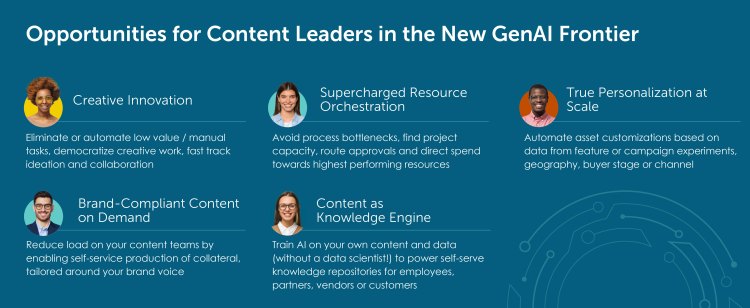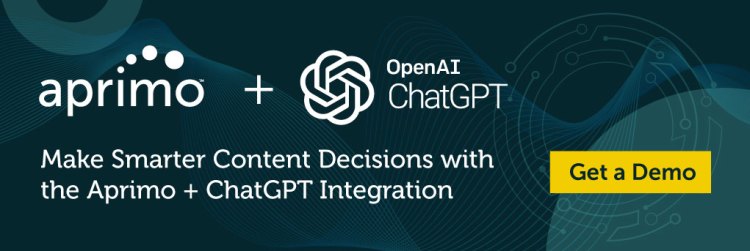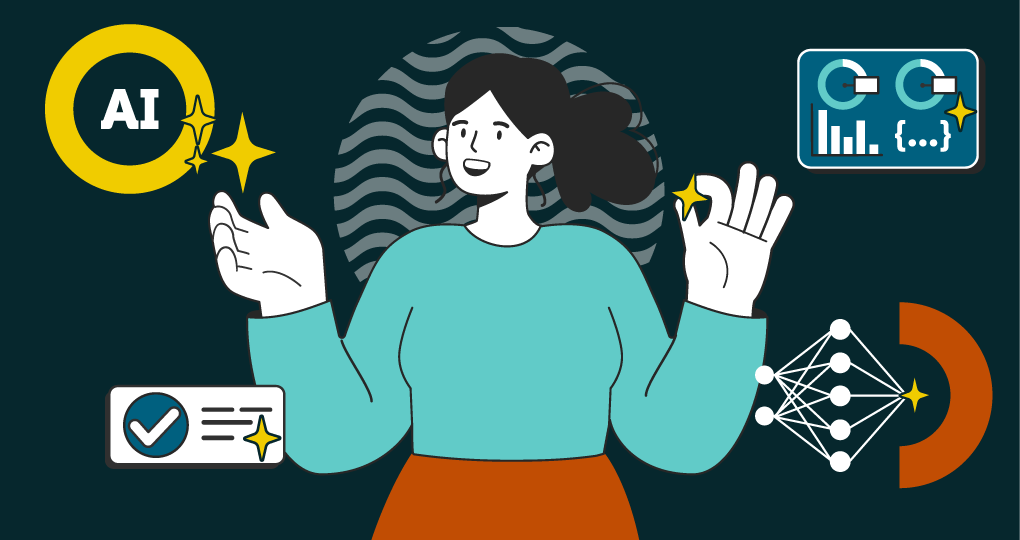The field of artificial intelligence (AI) has been growing rapidly in recent years, and one of the most exciting developments has been the creation of advanced language models like GPT (Generative Pre-trained Transformer). These models can generate natural language text that’s virtually indistinguishable from human writing. One such model is ChatGPT, a large language model that was trained on vast amounts of text data, making it one of the most advanced AI language models available today. This blog post will demystify GPT, ChatGPT, and AI language models and explore what this means for different user groups, including content marketers, creative teams, digital asset managers, and CXOs who care about governance and risk.
Understanding AI Language Models
Language models like GPT and ChatGPT are designed to learn and understand natural language patterns by analyzing large amounts of text data. This data is used to train the model, allowing it to generate new text that is similar in style and structure to the original data. These language models aim to make it easier for computers to understand human language, which can be challenging due to its complex and varied nature. By training on massive amounts of text data, language models like GPT and ChatGPT can learn to recognize patterns and make connections between different words and phrases, allowing them to generate new text that is both grammatically correct and semantically meaningful.
What Does GPT Mean for Content Marketers and Creative Teams?
Generative AI models are already significantly impacting content and creative operations for marketing teams, and this trend is only expected to accelerate in the coming years. With its ability to generate high-quality text data, AI models like ChatGPT are opening new possibilities for marketers to create engaging content and campaigns more efficiently and effectively than ever before.?
For content marketers and strategists, these new AI language models represent an exciting opportunity to create high-quality content at scale. In fact, by 2025,?Gartner?predicts 30% of outbound marketing messages from large organizations will be synthetically generated, up from less than 2% in 2022. These AI language models can be used to create blog posts, social media updates, website copy, campaign briefs, and more that are tailored to specific audiences and topics. By leveraging these models, content marketers can save time and resources while still producing high-quality content that resonates with their target audience.
For creative teams, AI language models can generate new ideas and inspiration. These can be used to create prompts, headlines, and even entire articles, providing a starting point for creative brainstorming. Language models like ChatGPT can also generate dialogue between characters, helping to flesh out stories and plotlines.

Benefits and opportunities for content marketers and creative teams
Automated content generation: Content strategists and marketers can generate a wide variety of high-quality content types at scale, including blog posts, newsletters, social media updates, and even long-form articles, without investing significant time and resources in creating the content.?
Inspiration:?Content marketers can leverage these AI language models to overcome writer’s block and get inspiration for new ideas. And AI-generated content can serve as a starting point that can be refined and personalized by the creative team.
Personalization and segmentation:?AI can generate personalized content tailored to individual customers’ needs and interests by analyzing user data and creating user segments based on attributes such as demographics, behavior, or preferences. Content marketers can then deliver tailored content to each segment, increasing the chances of engagement and conversion. According to?Gartner, driving a great customer experience is why organizations invest in GPT.
Audience insights:?AI-powered analytics tools can provide valuable insights into audience behavior, preferences, and interests. By analyzing user data, AI algorithms can identify patterns and trends, helping content marketers and creative teams understand their target audience better.?
Content optimization:?AI algorithms can analyze data from search engines, social media platforms, and other sources to identify keywords, topic trends, and optimization opportunities. Content marketers can leverage this information to optimize their content, enhance its visibility, and increase organic traffic to their websites or platforms.
Content curation and recommendation:?AI can analyze user behavior, preferences, and historical data to suggest relevant content to users. Content marketers and creative teams can leverage these systems to curate and recommend their own content, ensuring that users are exposed to a variety of relevant assets. AI can also help identify content gaps or opportunities for content expansion based on user interests and engagement metrics.
Image and video editing:?AI-powered tools can assist creative teams in tasks like image cropping, resizing, color correction, and video editing ? saving time and effort and allowing content marketers and creative teams to focus on higher-level tasks like ideation and strategy. GPT cannot do this on its own, it must be combined with an image or video generator.
Content strategy performance optimization:?By analyzing customer behavior and engagement data, AI can help content strategists and marketers identify which types of content resonate with their target audience so they can adjust their strategy accordingly.?
While AI can provide valuable assistance, human creativity, and strategic thinking remain essential in content marketing and strategy. Content marketers and creative teams play a crucial role in guiding AI models, ensuring brand consistency, and making decisions based on their expertise and understanding of the target audience.?
What Does GPT Mean for Digital Asset Managers?
Digital asset management (DAM) managers and librarians are critical in ensuring that an organization’s digital assets are properly organized, secured, and accessible. With the advent of generative AI like ChatGPT, the role of DAM librarians is likely to undergo significant changes as organizations seek to leverage the power of AI to manage their digital assets more efficiently and effectively.?
Benefits and opportunities for digital asset managers
Automated metadata and tag generation:??By analyzing the content of digital assets and extracting relevant information, GPT and AI can generate relevant keywords and tags, accelerating the cataloging process and ensuring consistent and accurate metadata across a large number of assets.
Automated caption and description generation for images and videos:‘This capability is handy for organizations with extensive collections of visual content, such as museums, archives, and media companies. With GPT, DAM librarians can automatically generate captions and descriptions that accurately describe the content of each asset, making it more accessible and useful to a broader audience.
Improved search and retrieval of digital assets:? AI algorithms can analyze the content, context, and user behavior patterns to provide more accurate and relevant search results. This lets librarians and users quickly locate assets based on their specific needs, saving time and effort.
Content analysis and classification:?GPT models can understand and analyze the content of various types of assets, including text, images, and videos. DAM librarians can leverage this capability to automatically classify assets based on their content, sentiment, or other attributes.
Personalization and recommendation:?AI can help DAM librarians provide personalized experiences to users by analyzing their preferences, search history, and interactions with assets. Based on this data, AI algorithms can recommend relevant assets to users, helping them discover new content or find assets they may have overlooked.??
Content preservation and digitization:?AI technologies, such as optical character recognition (OCR) and image recognition, can facilitate the process of digitization and preservation. AI-powered systems can automatically convert printed or handwritten text into searchable digital formats, extract relevant information from images, and enhance the quality of digitized assets.
Copyright and rights management:?AI algorithms can analyze assets to detect copyright infringement, identify rights holders, and help DAM librarians ensure compliance with intellectual property laws. Additionally, AI-powered systems can aid in tracking and managing licenses, permissions, and usage restrictions associated with digital assets. AI-generated assets are automatically tagged as such to improve content governance.
Data analysis and insights:?GPT and AI technologies can process and analyze large volumes of data related to digital assets. DAM librarians can leverage AI to gain valuable insights into asset usage, user behavior, trends, and patterns. This information can help in making informed decisions about resource allocation, collection development, and user engagement strategies.
It’s important to understand that while AI can greatly assist DAM librarians, human expertise and judgment remain crucial. Librarians play a key role in training and fine-tuning AI models, ensuring data quality, and making critical decisions based on their domain knowledge and understanding of user needs.

What Does GPT Mean for CXOs Who Care About Governance and Risk?
Generative AI like ChatGPT is transforming how CXOs make purchase decisions around risk mitigation and content ROI. The technology enables their teams to work faster and smarter and drive better outcomes without compliance and governance.
Benefits and opportunities for CXOs
Content compliance and risk assessment:?AI-powered systems can automatically scan and evaluate content for regulatory, legal, or ethical violations. And they can analyze content against predefined rules, policies, and industry standards, flagging potential risks and issues and allowing CXOs to proactively address compliance concerns and minimize the risk of reputational damage or legal consequences.?
Brand consistency and governance:?AI can assist CXOs in maintaining brand consistency across various content channels and touchpoints. By leveraging AI-powered tools, CXOs can automate the review and approval process, ensuring that content aligns with brand guidelines, messaging, and visual identity. AI algorithms can analyze content for brand tone, style, and language, helping CXOs maintain a cohesive brand image and voice.
Reduced risk of copyright infringement:?As mentioned in our discussion about DAM librarians, AI models offer valuable solutions to CXOs by automating copyright compliance processes, identifying infringements, and providing proactive monitoring and enforcement. By leveraging AI tools, CXOs can reduce the risk of copyright infringement, safeguard their intellectual property, and maintain legal compliance.
CXOs must ensure that AI models are transparent, accountable, and aligned with their organization’s values and governance frameworks. CXOs play a vital role in setting ethical guidelines, interpreting AI-generated insights, and making strategic decisions based on a combination of AI-driven insights and their own experience and judgment.
Potential Risks and Challenges of Using GPT
While GPT and similar AI technologies offer significant benefits for content management, content operations, digital asset management, and compliance, some potential risks and challenges must be considered.?
Bias and inaccuracies:?GPT models are trained on large datasets, which means they can inadvertently learn and perpetuate biases present in the data. This can lead to biased or inaccurate content generation, recommendations, or analysis. These data sets can also quickly become outdated and require constant training efforts. CXOs need to carefully review and monitor the outputs of AI models to ensure they align with their organization’s values and standards and avoid reinforcing discriminatory or misleading content.
Lack of control and explainability:?GPT models are complex black-box systems, making it challenging to understand and control their decision-making process. The lack of transparency and explainability can raise concerns about accountability and governance. CXOs may face difficulties identifying and addressing potential risks, errors, or biases in AI-generated content. Organizations need to establish clear guidelines and processes to address these challenges.
Legal and compliance risks:?AI-generated content may inadvertently violate copyright, intellectual property rights, or other legal requirements. Organizations must ensure that AI-generated content adheres to relevant laws and regulations and that appropriate measures are in place to manage legal risks associated with content generation.
Reputation and brand risks:?AI-generated content may not always accurately represent an organization’s brand voice, values, or messaging. If AI-powered content is inconsistent, misleading, or inappropriate, it can harm an organization’s reputation and erode customer trust. Organizations should carefully review and validate AI-generated content to ensure it aligns with their brand guidelines and desired image.
Data privacy and security:?GPT models require access to large amounts of data for training, including potentially sensitive user information. Organizations must handle data privacy and security concerns effectively, ensuring that customer data is protected and used in compliance with privacy regulations. CXOs should implement robust data protection measures and conduct thorough risk assessments to safeguard against data breaches or misuse.
Overreliance on AI: While AI can automate various aspects of content management and operations, organizations should be cautious about overreliance on AI systems. Human expertise and judgment remain essential in content strategy, creativity, and context understanding. Organizations should balance leveraging AI capabilities and maintaining human oversight and control to mitigate risks and ensure quality.
Technical limitations and challenges:?GPT models have certain limitations, such as the potential for generating nonsensical or inconsistent content. They may struggle with understanding context, sarcasm, or nuances in language. Organizations should be aware of these limitations and invest in continuous monitoring, fine-tuning, and improvement of AI models to address these challenges.
Harnessing the Power of Generative AI
Organizations must establish robust governance frameworks, including guidelines, policies, and validation processes, to mitigate these risks and challenges associated with using generative AI models in content management and operations. Regular monitoring, transparency, and ongoing human oversight are necessary to ensure AI-generated content aligns with organizational goals and values while minimizing potential risks.
Despite these challenges, the use of generative AI like ChatGPT will likely become more widespread in the coming years. As organizations seek to optimize their content strategy and mitigate risk, AI will become an increasingly important tool for content strategists, marketers, Digital Asset Managers, and CXOs. By embracing this technology and working closely with AI specialists, these users can help their organizations to unlock the full potential of generative AI and stay ahead of the curve in the fast-paced world of content marketing.
Aprimo has already taken the lead in leveraging AI for Content Operations, revolutionizing the way businesses manage their content. With Aprimo AI for Content Operations, organizations can automate project management tasks, enhance asset discoverability, and optimize asset reuse. The cutting-edge technology learns and adapts over time, making increasingly precise decisions tailored to your specific business requirements. Our principles on AI allow us to pave the way for efficient and intelligent content management, delivering unparalleled results.
Have you heard about our new ChatGPT integration? Check it out here!



